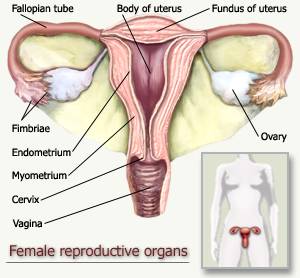 Women’s reproductive health covers an array of diseases and conditions that affect the female reproductive system. The reproductive system is a system of organs and accessories (fluids, hormones, pheromones). This blog will cover some of the most common types of conditions affecting the woman’s reproductive system, along with diagnostic criteria, risk factors, symptoms and treatment options. Alternative therapies are discussed in detail, as many of these conditions are limited in therapeutic routes. The prevalence of reproductive disease seems to be escalating, so it’s important to know how you can protect yourself and what your options are after diagnosis. Click on the links found on the above menu for info specific to each disease.
Women’s reproductive health covers an array of diseases and conditions that affect the female reproductive system. The reproductive system is a system of organs and accessories (fluids, hormones, pheromones). This blog will cover some of the most common types of conditions affecting the woman’s reproductive system, along with diagnostic criteria, risk factors, symptoms and treatment options. Alternative therapies are discussed in detail, as many of these conditions are limited in therapeutic routes. The prevalence of reproductive disease seems to be escalating, so it’s important to know how you can protect yourself and what your options are after diagnosis. Click on the links found on the above menu for info specific to each disease.
The woman’s reproductive system is located primarily in the pelvic region and contains three main parts:
-The vagina
-The uterus
-The ovaries
Although the breasts are involved in the reproductive process (parenting stage), they are not considered part of the reproductive system – but will still be covered on this blog. Modern medicine has come a long way in understanding how the woman’s reproductive system functions. In fact, ancient Greek physicians believed that the womb would get antsy and wander around the body at will, causing hysteria (what we call mood swings today) and female health problems. They believed that the womb needed to be confined somehow in order to resolve these problems.
According to the centers for disease control and prevention (CDC), the reproductive system is one of the most fragile systems of the body. Prone to infection and injury, protecting the reproductive system is a critical part of overall health and well being. Many women overlook reproductive health, which often leads to some of the conditions mentioned in this blog. Some of the most common risk factors of chronic disease in women of reproductive age are modifiable. Risk factors like being obese, smoking, insufficient physical activity and diet all contribute to chronic illness.
Here are some of the ways you can reduce your risk of reproductive disease:
-Regular screening: At any age, regular screening can help identify abnormalities in the early stages. Early diagnosis is critical in addressing many reproductive illnesses.
-Diet: Eating foods rich in vitamins and minerals (like green leafy vegetables) reduces your risk of most diseases by protecting you from free radicals and providing the nutrients necessary for normal functioning of all body systems.
-Physical activity: Being overweight and obese maximizes your risk for chronic illness and disease. Being physically active on a regular basis increases muscle mass, bone density, and keeps all body systems healthy.
Interesting facts about the woman’s reproductive system:
-Women are born with all the eggs they will ever have (about 2 million!).
-Each mature egg contains one copy of each gene in the human genome (half the amount necessary for life).
-There are four major hormones involved in the menstrual cycle: follicle-stimulating hormone (FSH), luteinizing hormone, estrogen and progesterone.
-The uterus is super-elastic. In non-pregnant women, a healthy uterus measures about three inches long. During pregnancy, the outer edge of the uterus can reach the lower edge of the ribcage.

Any info on tissue tears in the labia and developing adhesions.
Unfortunately, we do not have any specific articles on tissue tears in the labia and developing adhesions yet; but I did find the websites listed below you might find useful. Whenever tissue is exposed to trauma or tears it becomes inflamed as part of the body’s immune response. If the tissue is subjected to large amounts of damage adhesions begin to form.
http://www.drgreene.com/articles/labial-adhesions/
http://www.pelvicpainrehab.com/female-pelvic-pain/553/pelvic-pain-the-role-of-scar-tissue/
looking for information on women pass the childbearing age with a history of fibroid tumors. Was told that after I turned a certain age they would shrink. Is that a true statement?
Hi Annie, please check out systemic enzymes– Exclzyme in particular for total body inflammation.